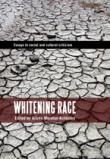AustLit
The material on this page is available to AustLit subscribers. If you are a subscriber or are from a subscribing organisation, please log in to gain full access. To explore options for subscribing to this unique teaching, research, and publishing resource for Australian culture and storytelling, please contact us or find out more.
Latest Issues
AbstractHistoryArchive Description
'With its focus on Australia, Whitening Race enagages with relations between migration, Indigenous dispossession and whiteness. It creates a new intellectual space that investigates the nature of racialised conditions and their role in reproducing colonising relations in Australia.' Back cover of Whitening Race (2004)
Notes
-
Contents indexed selectively.
Contents
* Contents derived from the
Canberra,
Australian Capital Territory,:Aboriginal Studies Press
, 2004 version. Please note that other versions/publications may contain different contents. See the Publication Details.
-
Reconciliation in and out of Perspective: White Knowing, Seeing, Curating and Being at Home in and against Indigenous Sovereignty,
single work
criticism
(p. 17-31)
Note: Chapter 2
-
'A Lovely Land ... by Shadows Dark Untainted'? : Whiteness and Early Queensland Women's Writing,
single work
criticism
(p. 148-163)'This chapter looks at the formative but largely forgotten years of white women's writing, from the establishment of the colony of Queensland in 1859 until 1937, the year in which the assimilation policy was adopted across Australia.' Whitening Race (2004) p. 148Note: Chapter 11
Publication Details of Only Known VersionEarliest 2 Known Versions of
Works about this Work
-
Anti-Nativism in Australian Indigenous Literature
2010
single work
criticism
— Appears in: Kultura Historia Globalizacja , no. 7 2010; (p. 53-64) 'What in today's literary discourse are the reality and the world created by the words: nativism, nativity, the native, native? Why do we still speak and communicate with them and use them in different contexts, even though we know that these words often carry a negative emotional meaning load, taking us to spaces, times, and experiences of colonial suffering, despite their basis in academic arguments. In Australia such issues have been addressed by many Indigenous writers, amongst them — M. Langton, A. Moreton- Robinson, Mudrooroo, C. Watego, T. Birch, F. Bayet — Charlton, to name just a few.' (Author's introduction)
-
Untitled
2006
single work
review
— Appears in: The Australian Journal of Indigenous Education , vol. 35 no. 2006; (p. 114-116)
— Review of Whitening Race : Essays in Social and Cultural Criticism 2004 single work criticism
-
Untitled
2006
single work
review
— Appears in: The Australian Journal of Indigenous Education , vol. 35 no. 2006; (p. 114-116)
— Review of Whitening Race : Essays in Social and Cultural Criticism 2004 single work criticism -
Anti-Nativism in Australian Indigenous Literature
2010
single work
criticism
— Appears in: Kultura Historia Globalizacja , no. 7 2010; (p. 53-64) 'What in today's literary discourse are the reality and the world created by the words: nativism, nativity, the native, native? Why do we still speak and communicate with them and use them in different contexts, even though we know that these words often carry a negative emotional meaning load, taking us to spaces, times, and experiences of colonial suffering, despite their basis in academic arguments. In Australia such issues have been addressed by many Indigenous writers, amongst them — M. Langton, A. Moreton- Robinson, Mudrooroo, C. Watego, T. Birch, F. Bayet — Charlton, to name just a few.' (Author's introduction)
Last amended 2 Dec 2015 13:30:22
Common subjects:
Export this record




